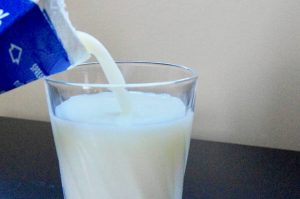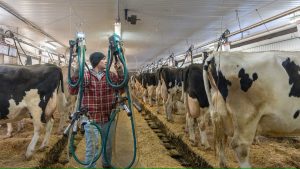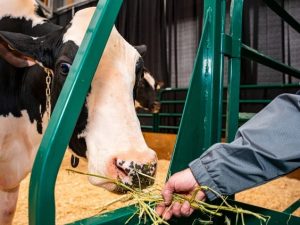
That’s not unusual. The sharp, hard cheese — a statistical benchmark for the federal government — has a long history in Canada’s almost $7-billion dairy industry. A history that’s key to understanding modern-day dairy politics.
“You need to go back to the farm level and the pricing of raw milk used to make cheese,” Al Mussell, an economist and research lead for Agri-Food Economic Systems, said.
Canada made roughly 515 million kilograms of cheese in 2019, costing on average $15.14 per kilogram.
About 31 per cent this was cheddar, while the remainder was what Statistics Canada calls “variety cheeses” — a group that includes everything from mozzarella to camembert.
These cheeses are by far preferred by Canadians: Their production and consumption has more than tripled since 1980. Cheddar consumption remained relatively stable during the same period.

It wasn’t always like this: Cheddar was once Canada’s most coveted dairy product at home and abroad.
“Cheddar cheese was a huge item that was exported to Great Britain during the war,” Mussell explained.
Canada, along with other Commonwealth countries such as Australia and New Zealand, was a key supplier of food to Britain during the Second World War. By 1945, more than 325 million kilograms of cheddar had been sent across the Atlantic to support the war effort.
That demand transformed the Canadian dairy industry, boosting the volume of milk farmers could produce and the amount of cheese and other dairy products made in the country. It was a boom for Canadian farmers, one that many expected would continue after the war, Mussell explained.
It didn’t. Demand for Canadian cheese and dairy tumbled, leaving farmers with too much milk on their hands and unsustainably low prices.
“We languished for decades under these chronically low milk prices,” Mussell said.
The federal government took a few different tacks to help dairy farmers through the 1950s, including import controls and subsidies to keep the industry afloat. These subsidies ended up costing hundreds of millions of dollars, Mussell explained, essentially to offset surpluses.
It wasn’t a sustainable solution, so the federal government developed a policy to cap the number of subsidies a farmer could receive with the goal to reduce the overall supply of dairy.
From there, it was a relatively easy shift in 1965 to capping the volume of milk farmers could produce — giving them milk production quotas, in other words. It was the start of a supply management system that endures today.
Canadian dairy farmers each own a milk quota, which only allows them to produce a set quantity to prevent milk flooding the market, while milk prices are controlled to reflect farmers’ costs of production. Both mechanisms are managed by the Canadian Dairy Commission.
Milk and dairy imports are also strictly controlled, with high tariffs applying to all dairy imports above a set threshold — a major sticking point between the Canadian government and the Trump administration in the recent NAFTA renegotiation.
It’s an approach that’s not without critics.
“A straightforward approach to improve the quality of life for all Canadians is to eliminate the quota system and restore a competitive approach to pricing our basic food inputs,” states a 2017 report by the Fraser Institute, a Vancouver-based right-wing think tank.
The supply management system, it argues, results in Canadians paying unnecessarily high prices for dairy products. Prices that could be lowered in an unregulated dairy industry similar to the one in the U.S.
It’s a model with no guarantee of success: Dairy products are not significantly cheaper in the U.S. For example, in December 2018 the average price of American cheese was $15.60 per kilo — 46 cents more expensive than in Canada. Meanwhile, American dairy farmers deal with significant price fluctuations, exacerbated by COVID-19, that put intense pressure on farms’ financial viability.
For Mussell, those arguments hold minimal appeal — especially when the supply management system is put into context.
“What I see is decades of misery (in the 1950s and 1960s) and a search for a policy approach that could work to deal with this issue and the government stumbled on it,” he said.
Cheddar might not be on many Canadians’ dinner plates — but its legacy lives on.
Marc Fawcett-Atkinson / Local Journalism Initiative/Canada’s National Observer

























